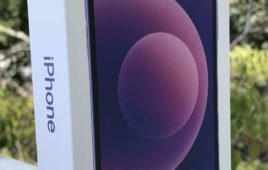The answer to the above question is mostly a resounding “yes.” Like, what else is the carrier going to do after losing postpaid customers quarter after quarter?
But that’s oversimplifying it. A lot has changed in the prepaid space. For a long time, prepaid was viewed as a segment of the wireless market that wasn’t as good a business as postpaid. Postpaid customers almost by definition sign two-year contracts, so churn is lower and therefore there’s more certainty involved. And there was a time when postpaid customers had to pay higher rates per minute and they didn’t get a great selection of handsets.
That’s all changing, from Boost and Virgin Mobile USA to their no-contract rivals like Tracfone, Leap Wireless International and MetroPCS. Heck, Tracfone now has a 5.1 percent U.S. market share compared with Sprint and T-Mobile USA, which are both around 12 percent, according to comScore. Prepaid is the fastest growing part of the wireless sector, and it’s only going to get more interesting as carriers add more broadband data flavors into the mix.
That’s not to say it’s going to be easy for Sprint to juggle four prepaid brands. When Sprint acquired Virgin Mobile USA last year and said it would continue to operate both the Virgin Mobile brand and its existing Boost Mobile brand, it sounded a little strange. How do you differentiate the two? Then earlier this week, Sprint announced that not only is it continuing with the Virgin, Boost and Assurance Wireless brands, it’s going to add a fourth, yet unnamed, brand to the mix. How does one company expect to juggle multiple brands, all aimed at the prepaid sector?
It becomes a bit clearer after talking with Neil Lindsay, chief marketing officer for Sprint’s prepaid brands. Lindsay, who was part of the original Australian team that brought Boost to the U.S. market, has learned a thing or two over the years.
One of Sprint’s new offerings of particular interest is the Virgin Mobile Beyond Talk plans geared for those who love their wireless – but not necessarily to talk. They’re on Facebook, Twitter or texting for what seems the better part of their day. These customers can’t get a Palm Pre on the Virgin Mobile service but starting next Wednesday, they can choose from several smartphones, including a $300 BlackBerry Curve (due for arrival in late May) if they’re willing to pay $10 more per month. Beyond Talk customers can pay as little as $25 a month for unlimited messaging, email, data and Web, plus 300 minutes of voice.
The $25 price point is designed to be as disruptive as Boost’s $50 all-inclusive plan that launched last year. Lindsay says it’s Sprint’s way of “making sure we change the way you buy wireless simply because you’ve changed the way you use wireless.”
Sounds rational. Another category that Sprint is going after is a segment that Boost identified a while ago – those aged 25 to 49 who are talking more on wireless but they want to talk and text at predictable prices. It’s why Boost came out last year with its “unwronged” commercials, focusing on value at an established price.
Then there’s the Assurance Wireless brand, which targets the low-income (and low churn) market that qualifies for free phones and service, and Sprint gets reimbursed by the government in states that offer the program.
As for that new, as-yet unnamed brand that Sprint plans to introduce, that’s a pay-by-the-minute strategy that is a little reminiscent of the days when you bought a prepaid card and watched the minutes go by. It certainly makes sense for those who are carefully watching their budgets these days. It also speaks to those, usually older, folks who want a phone to store in the glove box in case of emergency. Lindsay says it’s a low ARPU business but the acquisition costs aren’t that much and these customers tend to be satisfied with more entry-level handsets.
At first glance, pursuing a multi-brand approach sounds like a game of Scattergories. But when you think about it on the most basic level, it makes sense. Some people prefer calling their friends and associates. (You hear them as soon as the airplane lands.) Some prefer e-mail or texting. (You see them on planes, too.) Some like a combo approach, using e-mail or text at times and preferring to pick up the phone for other occasions.
We’ll have to wait and see how much havoc Sprint/Boost/Virgin Mobile wreaks on the prepaid space. But so far, it looks like they’ve done their homework.




